-
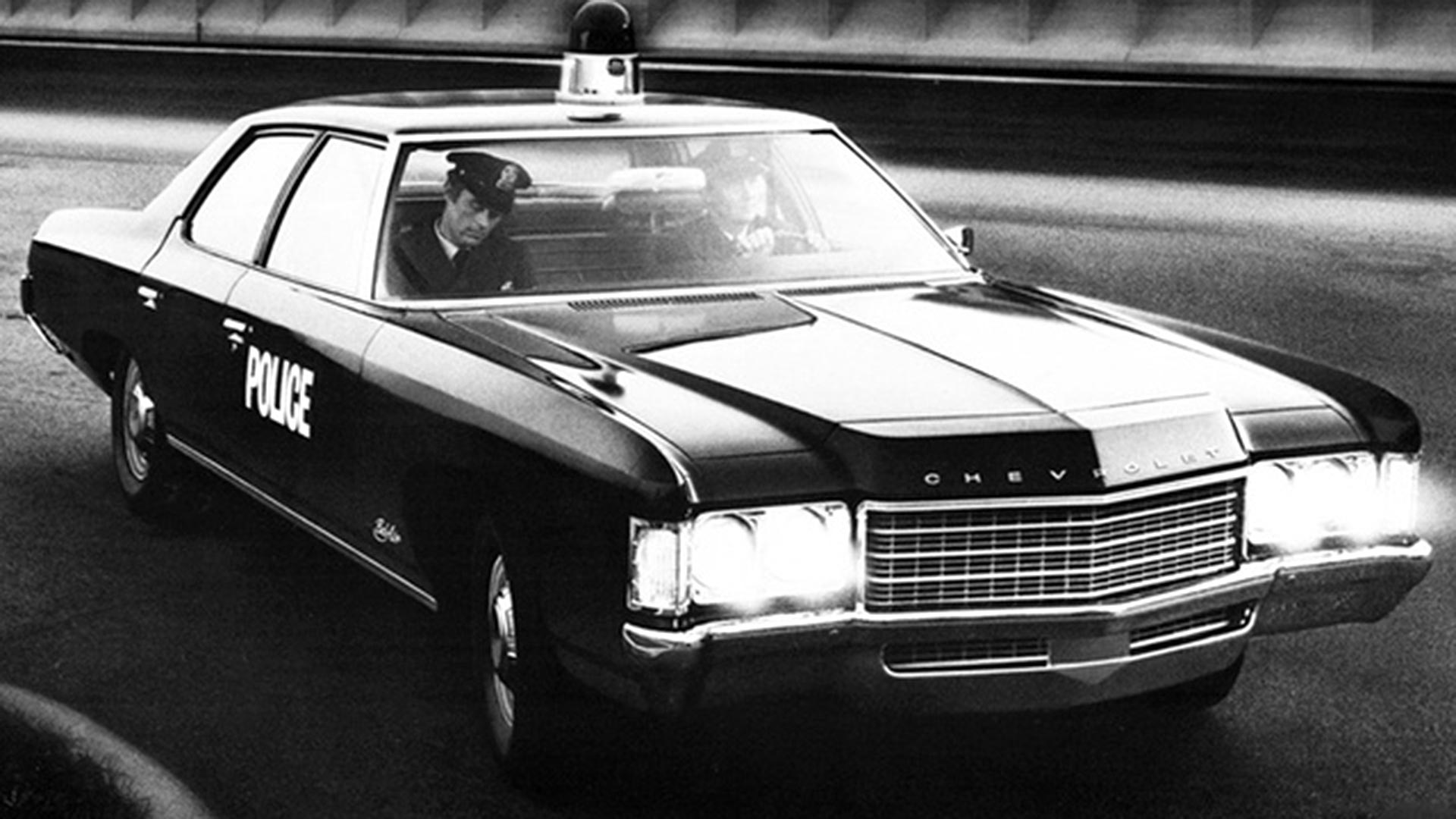
Which retro police car is your favorite
© GM Media ArchivesGeneral Motors and the Chrysler corporation have made some of the most iconic police vehicles of all time. Nothing strikes more fear into the heart of an evildoer like the sight of a police duty Chevrolet Tahoe or Dodge Charger hurtling toward them in the rearview mirror.
And this reputation goes back decades, to a time when rock and roll was new and cars flew fins a mile high. Packages added power and durability to the standard economy sedan, and police requirements refined the breed into specialized patrol vehicle capable of ceaselessly cruising the streets and interceptors capable of running down the fastest muscle Detroit could dream up.
These are but a few of our favorites from Mopar and the General. What’s your dream police car?
-
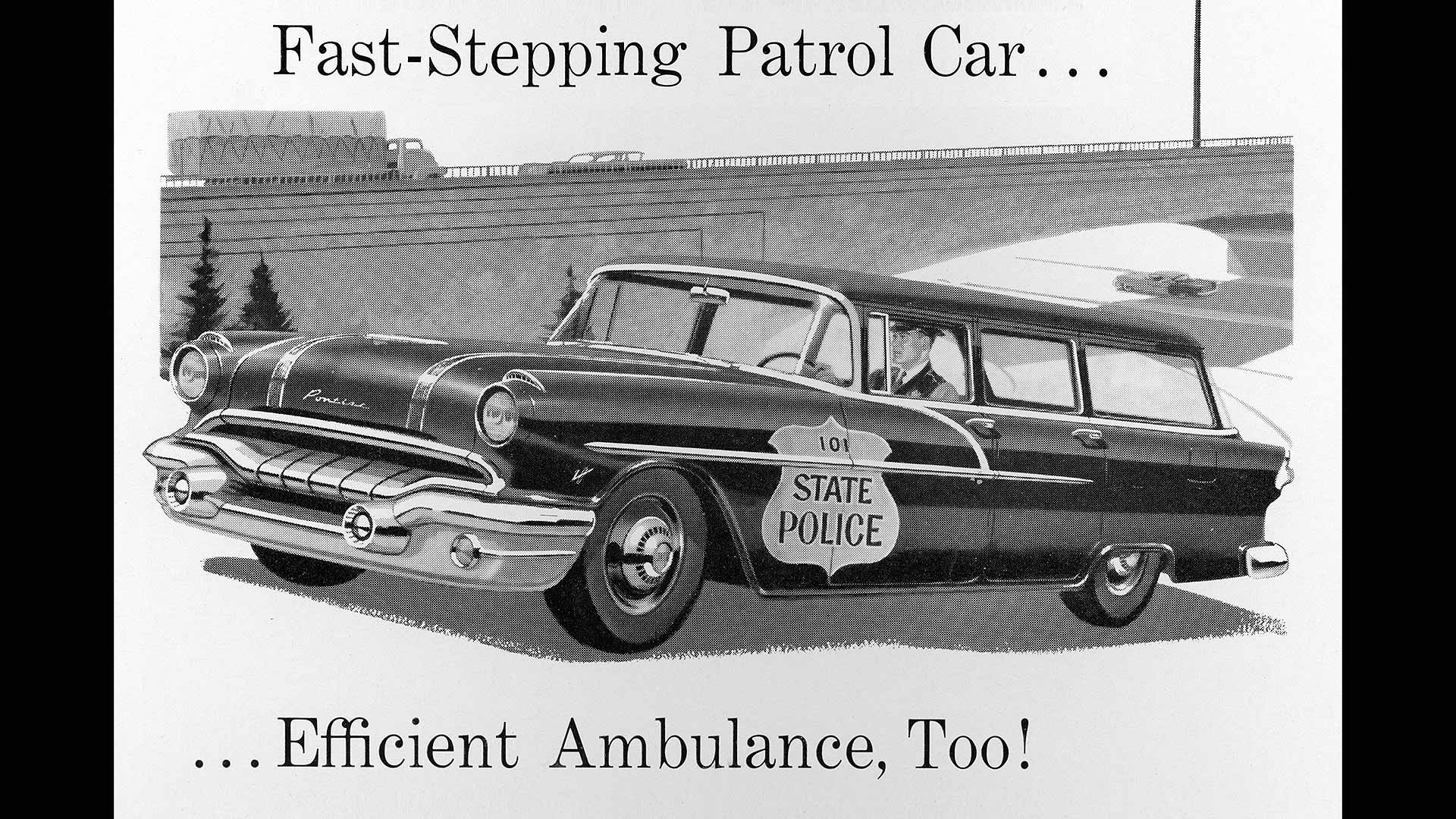
1956 Pontiac Strato-Streak
© GM Media ArchivesPontiac’s big wagon could be outfitted for police use or converted to an ambulance. The V8 under the hood was also called a Strato-Streak and had 285 horsepower. Pontiac bragged that this was the same engine that covered 2,841 miles in just 24 hours, setting a speed endurance record for the year. The Strato-Streak was hooked up to a Strato-Glide Hydra-Matic transmission. Ah, the Fifties!
-
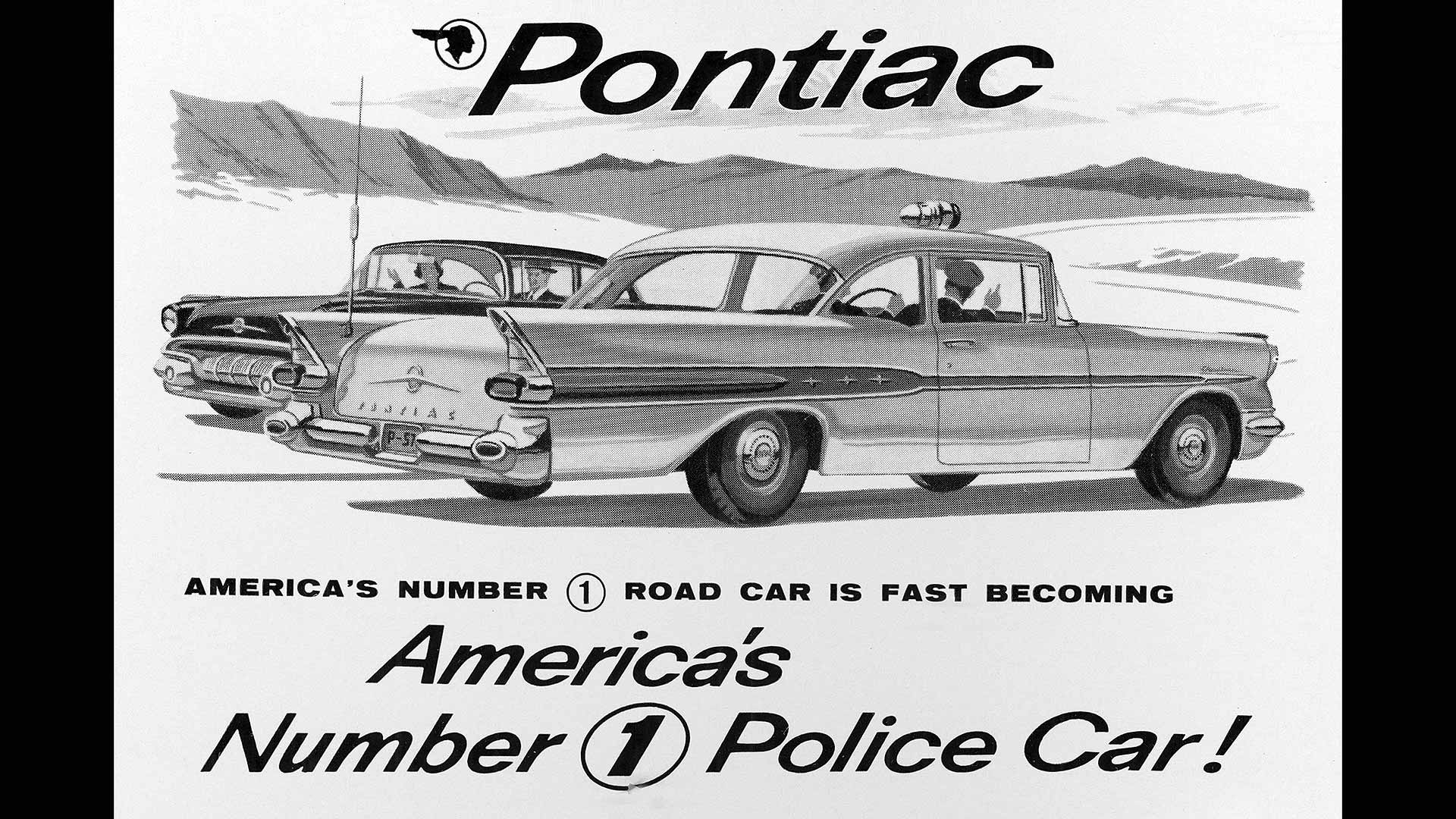
1957 Pontiac Chieftain
© GM Media ArchivesBy 1957, the Strato-Streak V8 was capable of a “barrel-chested” 317 horsepower with optional Tri-Power carburetion. Rather than barrels, Pontiac counted the number of jets on each of three in-line carbs. In normal driving, two jets would feed the engine, but when “all-out action” was required, a simple poke at the throttle would open up an additional four. With this setup, Pontiac was able to boast of both frugality and performance.
Also of note was Pontiac’s claim that the car’s “extra heft” greatly improved the handling.
-
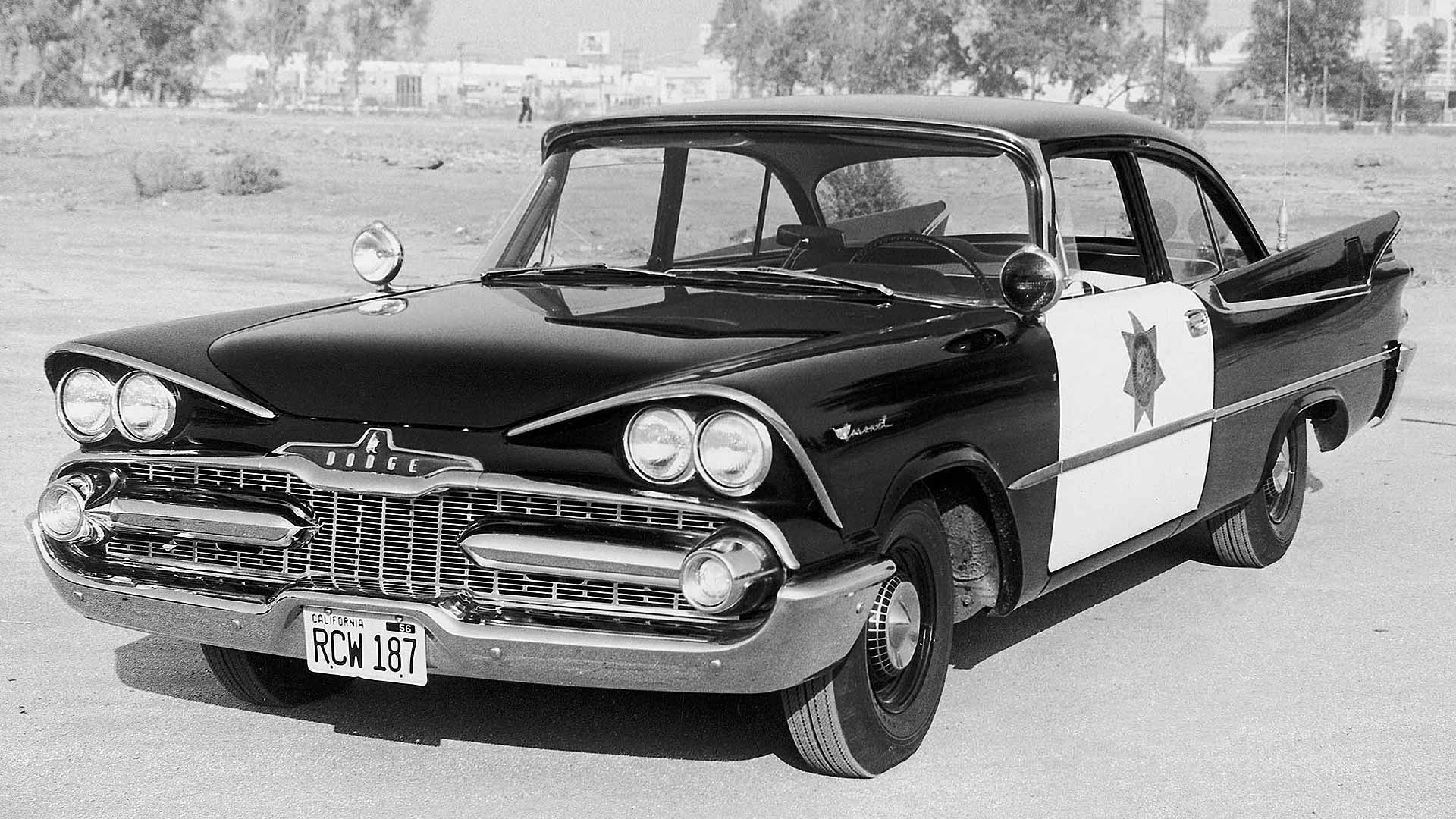
1959 Dodge Coronet
© FCAUndoubtedly the most stylish police cruiser of all time was the 1959 Dodge Coronet, designed by the famed Virgil Exner. There was good stuff under the skin, as well: stout unibody construction, a robust TorqueFlite transmission, and torsion bar suspension. Two 383-cubic-inch V8s were available for police work: a D-500 version with a single carb and 320 horsepower, and a Super D-500 with two four-barrels and 345 horsepower on tap. The California Highway Patrol used two-door models like the one above.
Most famous of the Coronets was the D-501 package with the 354 cubic-inch V8 with twin four-barrel carbs and 340 horsepower on tap, mated to a heavy-duty commercial transmission. The car had front brakes and spindles from a Dodge truck, torsion bars from a Chrysler, and rear brakes from an Imperial. Eight to ten D-501 Coronets are believed to have been in use by the Ohio State Patrol as pursuit vehicles.
-
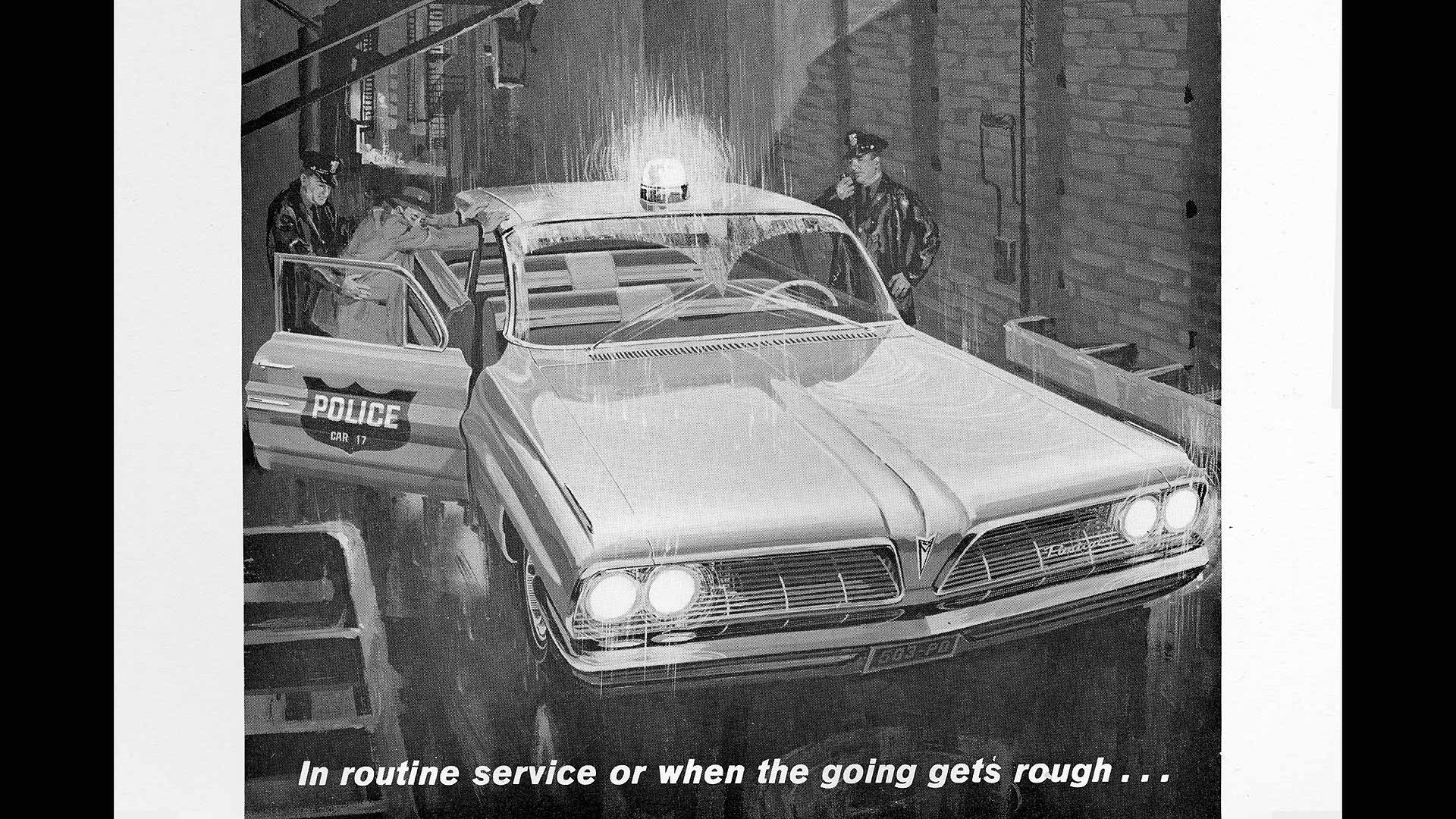
1961 Pontiac Enforcer
© GM Media ArchivesPontiac’s big, beautiful 1961 Catalina was slightly smaller and lighter than the previous model, but still packed 389 cubic inches of 303-horsepower V8 under the hood. The big 421 Super Duty engine was also available as a dealer-installed option that year.
Enforcers got heavy-duty everything in preparation for life on the force: oil and water coolers, three-speed transmission, brakes, generator, and front stabilizer bar. Both two- and four-door versions were available.
-
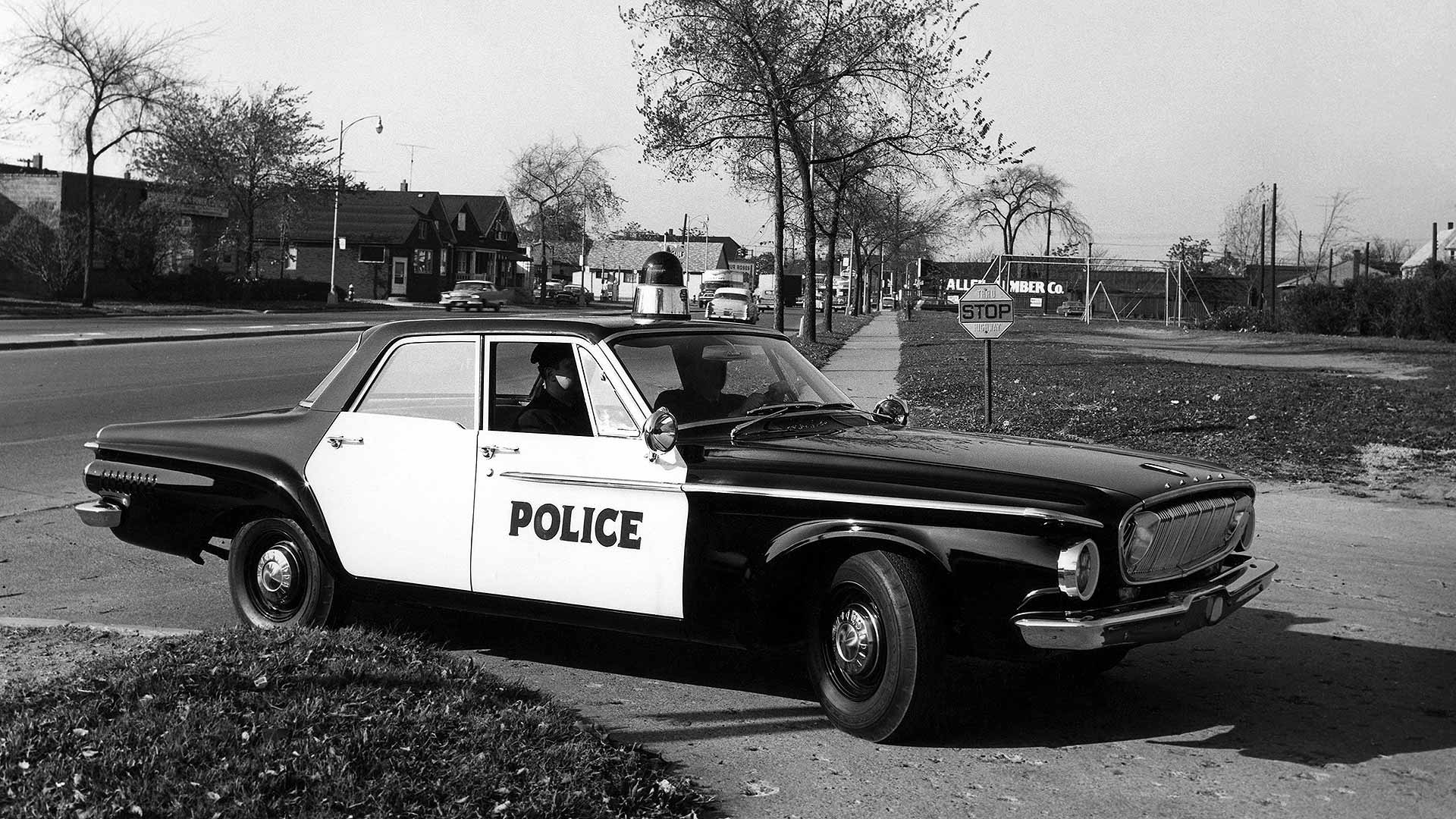
1962 Dodge Polara
© FCATop brass ordered Dodges to be pared down for 1962, and the resulting Polara was 300 pounds lighter than its predecessor. Though unconventionally smaller than most police cars, the Polara was fast. Standard top speed was 130 mph, and the Illinois State Police clocked their 305-horsepower models at over 140, blinding for the day.
Deep in the 1962 option sheet was an available 413 cubic-inch Max Wedge V8 with 415 horsepower. Though there is no concrete evidence that a ‘62 Police Enforcer 413 existed, there is also no evidence that it didn’t. We can dream, can’t we?
An official Police 413 showed up in 1963, but had “only” 360 horsepower.
-
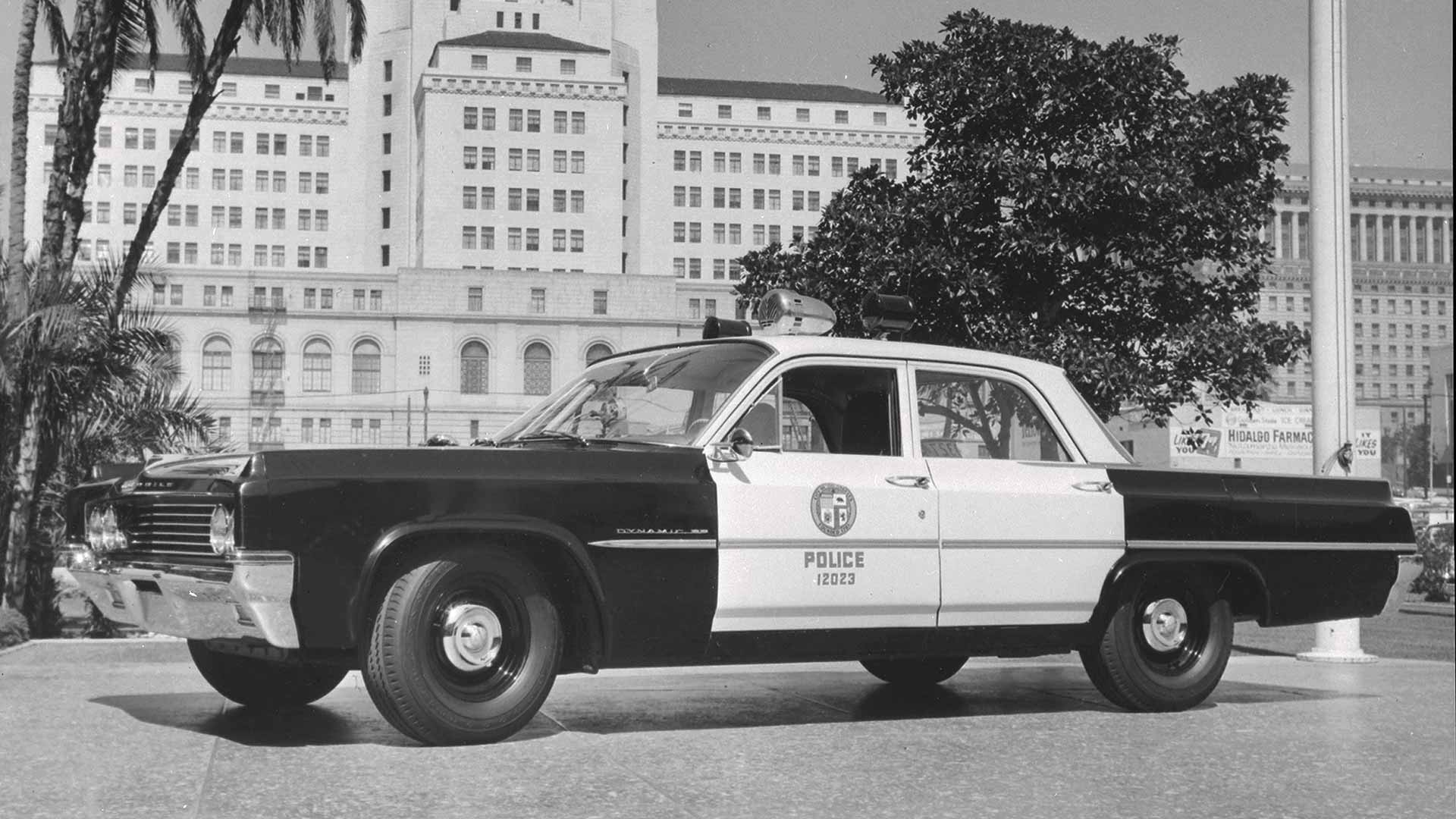
1963 Oldsmobile Dynamic 88
© GM Media Archives1962 finally saw the death of fins and other Jet Age design motifs across the Oldsmobile range. In 1963, the updated and modern Dynamic 88 was chosen by the Los Angeles Police Department as an interceptor.
394 cubic inches of hooligan-busting V8 lurked under the hood, maxed out to 345 horsepower and paired to a special-duty Hydra-Matic transmission. Other improvements included a heavy-duty chassis; heavy-duty brakes, shocks, and springs; and police-spec wheels and tires.
-
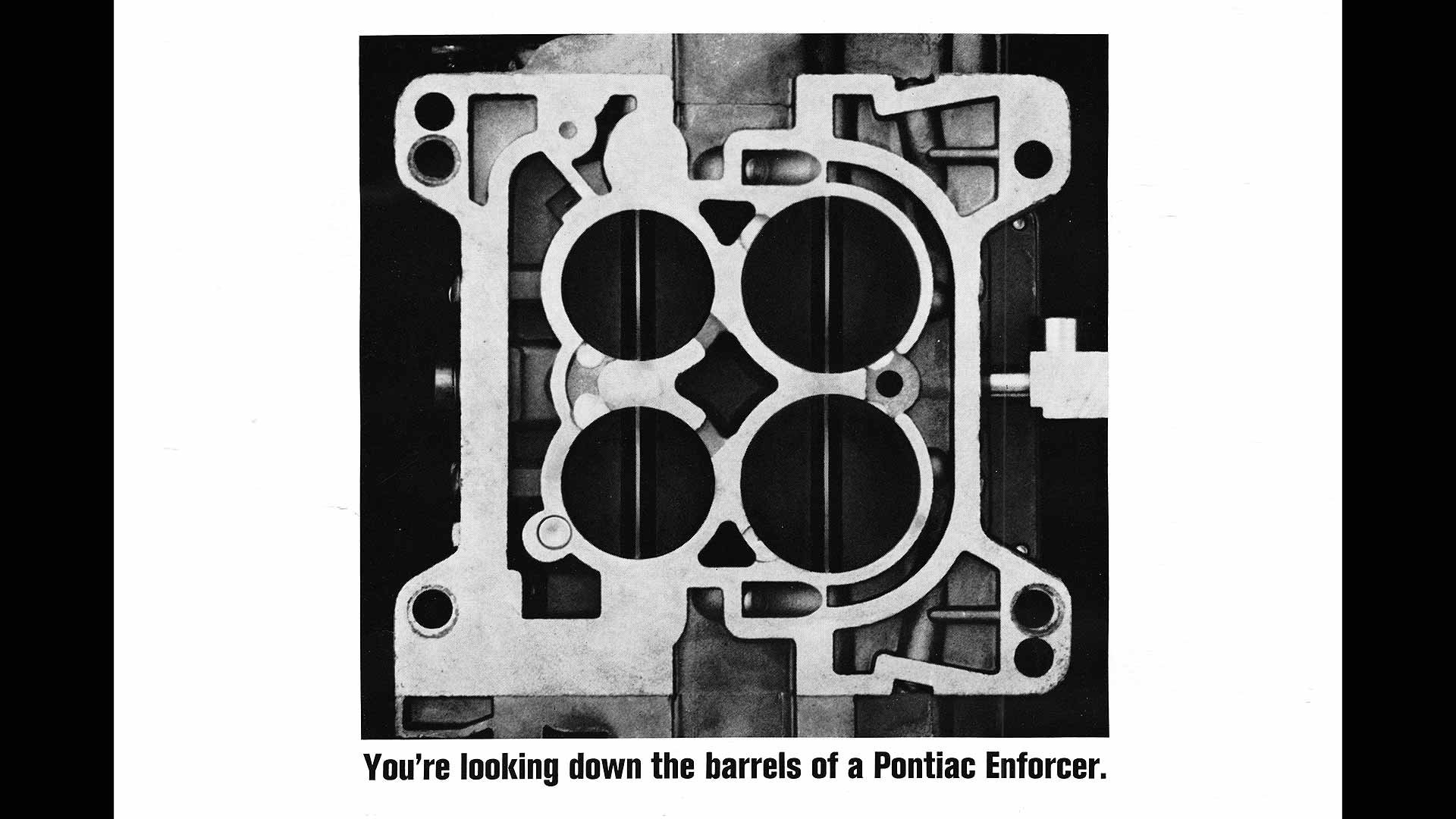
1964 Pontiac Enforcer
© GM Media ArchivesThat four-barrel carburetor is about all anyone needs to know about the 1964 Enforcer. For those who liked it hot, the Pontiac 5-0 could be ordered with a special cam, special spark plugs, and hydraulic valve lifters in addition to the gaping carb. The performance option raised horsepower to 306 from a stock 260. A four-speed Hydra-Matic and beefier suspension, brakes, cooling, and seats rounded out the package.
-
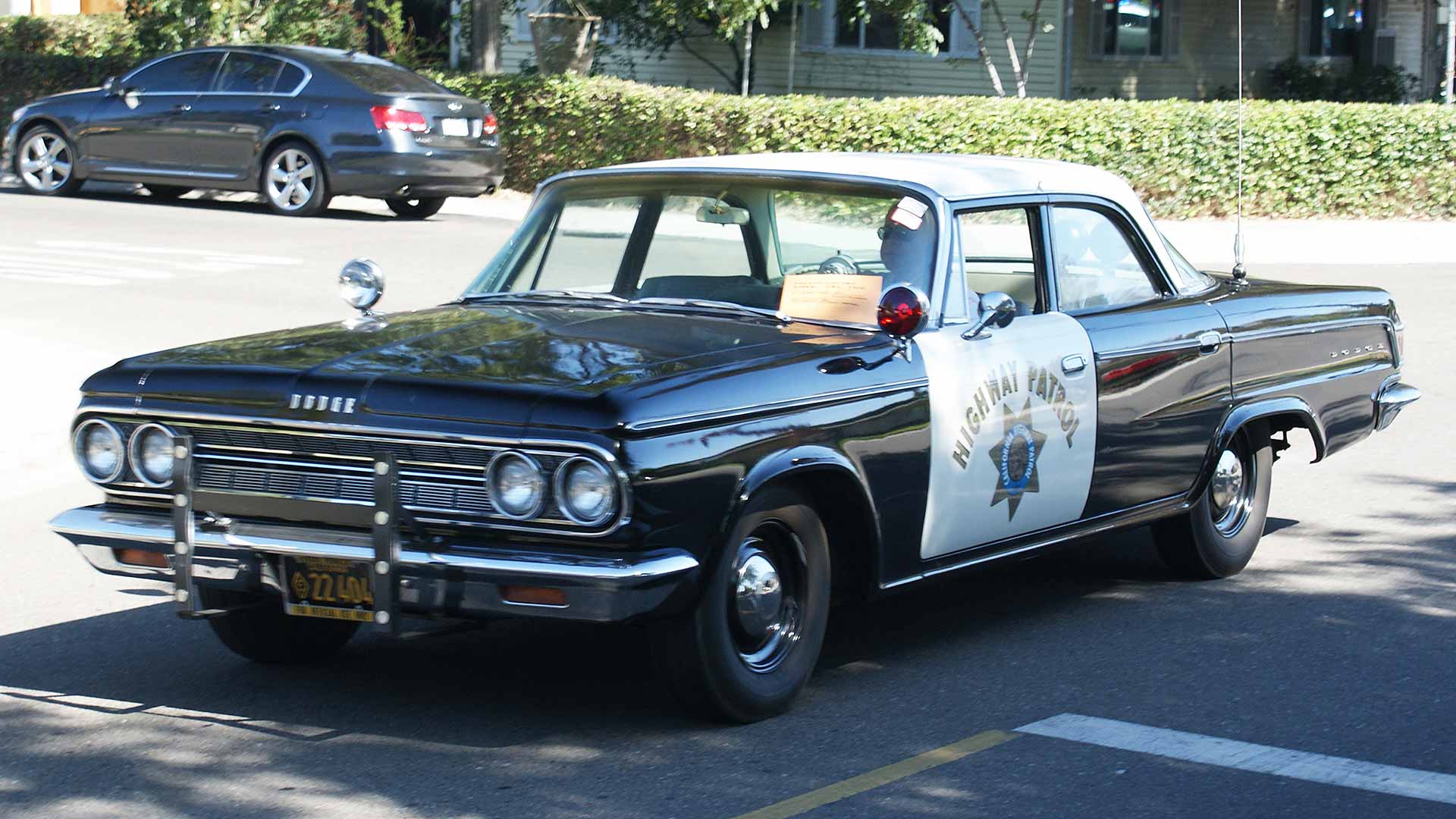
1964 Dodge 880 Police Pursuit
© Greg ReynoldsThe 880 Police Pursuit could run all day at triple-digit speeds and simply outlast whatever bad guys it couldn’t catch. High-speed tires mounted on truck wheels refused to blow out, and a high-pressure radiator with a seven-bladed fan kept the optional 413 cubic-inch engine cool no matter what. The monstrous V8 breathed in through a low-restriction air cleaner and out through a free-flowing exhaust, making 470 lb-ft of torque even though it used only one four-barrel carb as a nod to economy.
The frame was reinforced, the transmission also got massive cooling, the suspension was indestructible, and a limited-slip differential kept the power to the pavement around corners.
The 880 was only around from 1962-1964.
-
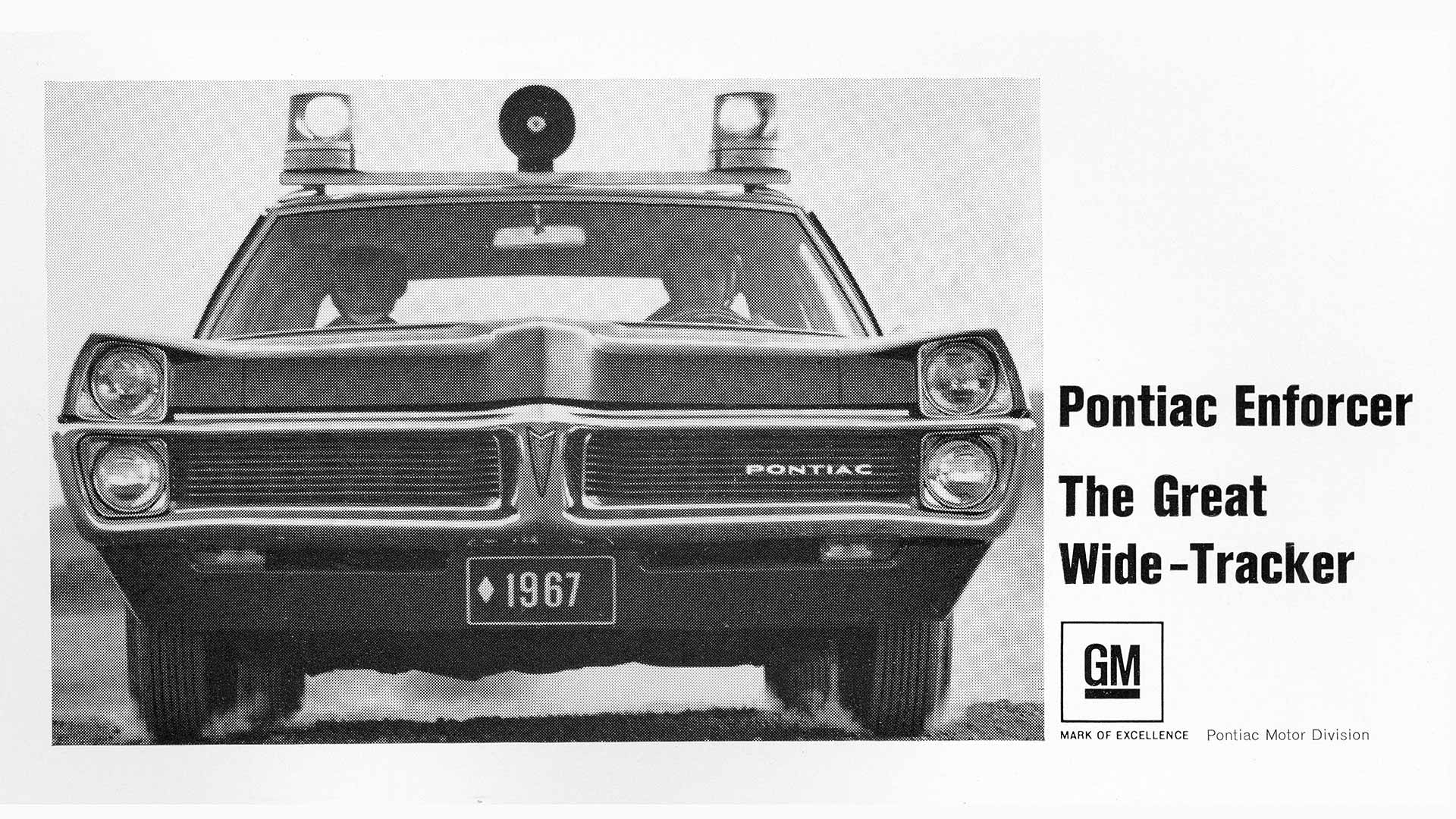
1967 Pontiac Enforcer
© GM Media ArchivesThe Officers Smiley and Friendly shown in the picture above are wearing helmets inside their interceptor for good reason. That is no normal Pontiac Enforcer with a normal 428 cubic-inch V8 under the hood, pumping out anywhere from a mild 265 horsepower to a pretty damned hot 360, depending on specification. No, that is a Catalina Super Enforcer with the Quadra-Power 428 installed, 376 horses and a criminally insane 462 lb-ft of torque.
So why the helmets? We suspect that the officers, being consummate safety experts, may have a few misgivings about the Great Wide-Tracker’s ability to change direction at the speeds it was capable of attaining, given the tire technology of the time. Yes, those model-skinny tires are indeed nylon-corded 4-plies, and were quite wide for the day.
-
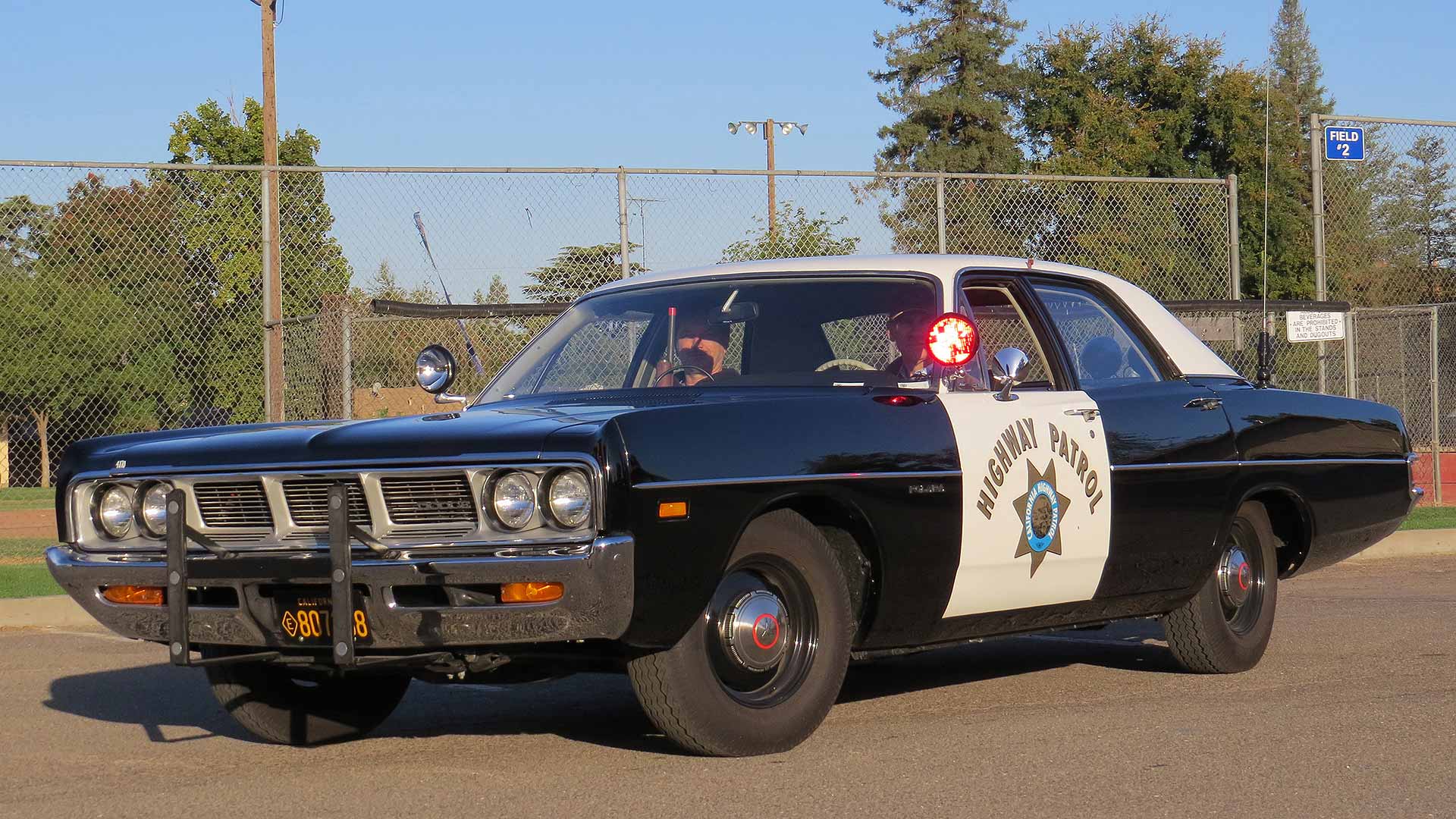
1969 Dodge Polara Pursuit
© Matt McLauchlinThe ‘69 Polara is regarded as one of the greatest police cars of all time. In California Highway Patrol form, 440 cubic inches launched the ungainly-looking interceptor to 60 mph in a hair over six seconds. The quarter mile was annihilated in 14.3 seconds at 99 mph, and top speed was 147 mph. Plenty of heavy-duty gear was hidden under the “fuselage” styling, like gargantuan semi-metallic brakes, a bigger battery, a high-output alternator, and specially-calibrated TorqueFlite automatic transmissions.
All that brawn under the hood made the Polara a serious threat to other muscle cars of the day. After all, Dodge offered the 440 to anyone with enough shekels to buy one.
-
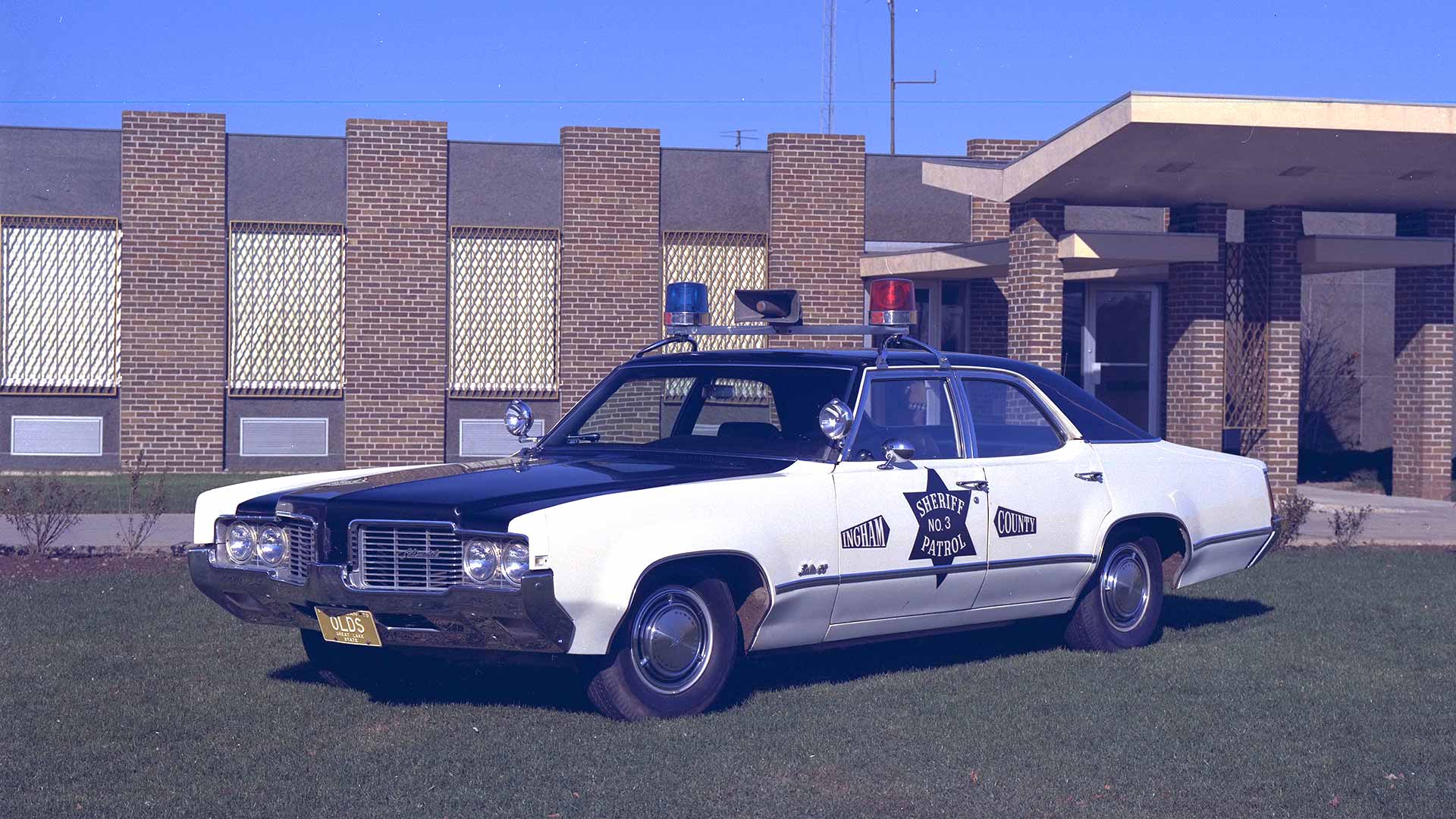
1970 Oldsmobile Delta 88
© GM Media Archives1970 was the acme of the first muscle car era and General Motors has just the tool for hunting down fleet-footed felons. The Police Apprehender Highway Patrol Package turned the mild-looking Delta 88 into a 140 mph beast. 455 cubic inches under the hood turned out 390 horsepower and a monstrous 500 lb-ft of torque. All that power was routed through a special heavy-duty Turbo 400 transmission to an anti-spin rear differential. Variable-ratio power steering and heavy-duty power front disc brakes kept the Olds under control.
-
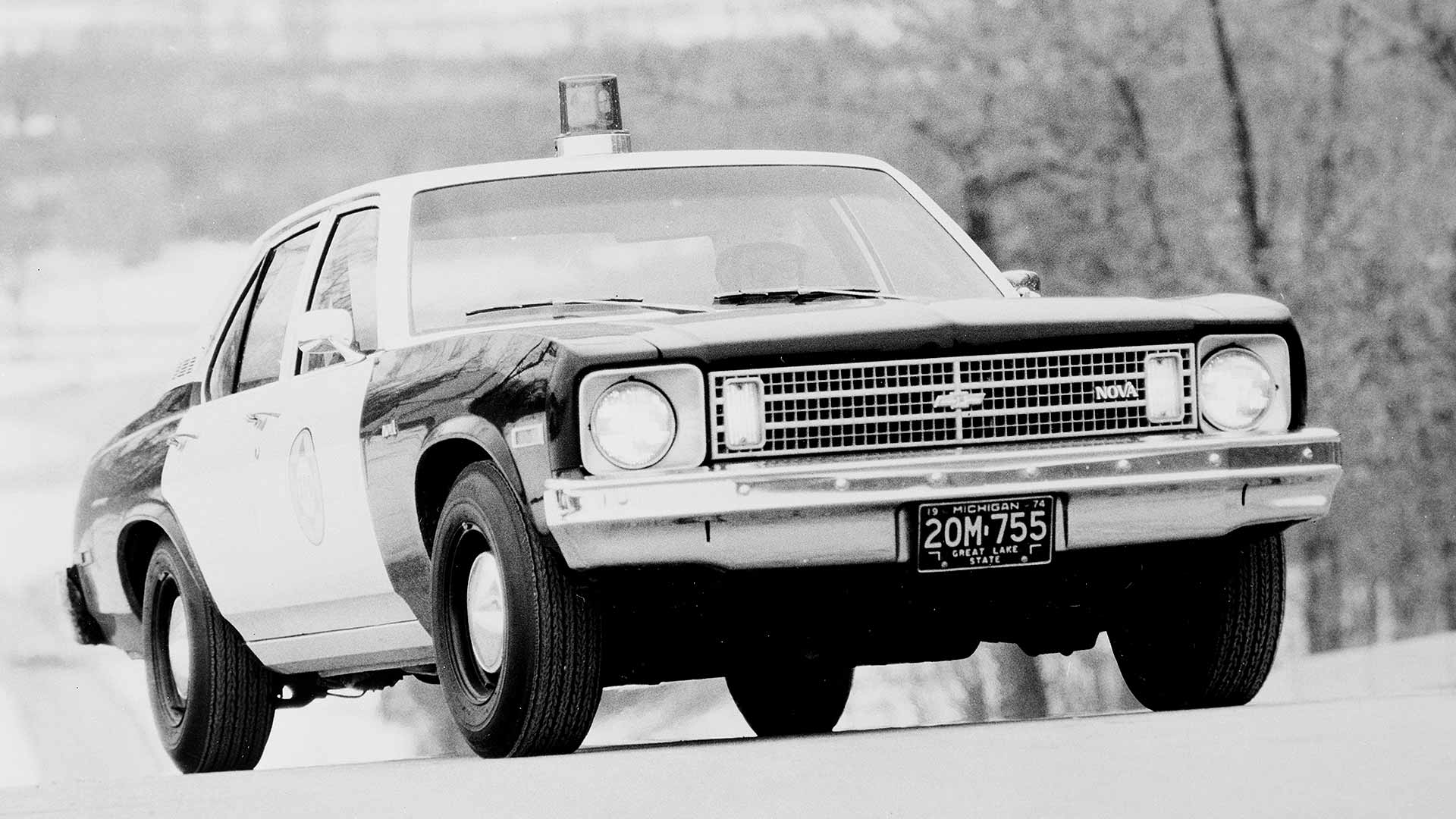
1975 Chevrolet Nova
© GM Media ArchivesThe compact Nova was the perfect answer to the gas crisis of the early 1970s. It used all the heavy-duty police bits but mounted them on a lightweight, economical package. Either the 305 or 350 cubic-inch engine could be ordered, making 170 horsepower in top spec. While that seems a bit featherweight today, it was five more horses than the 1975 Corvette.
A two-door version was also offered.
-
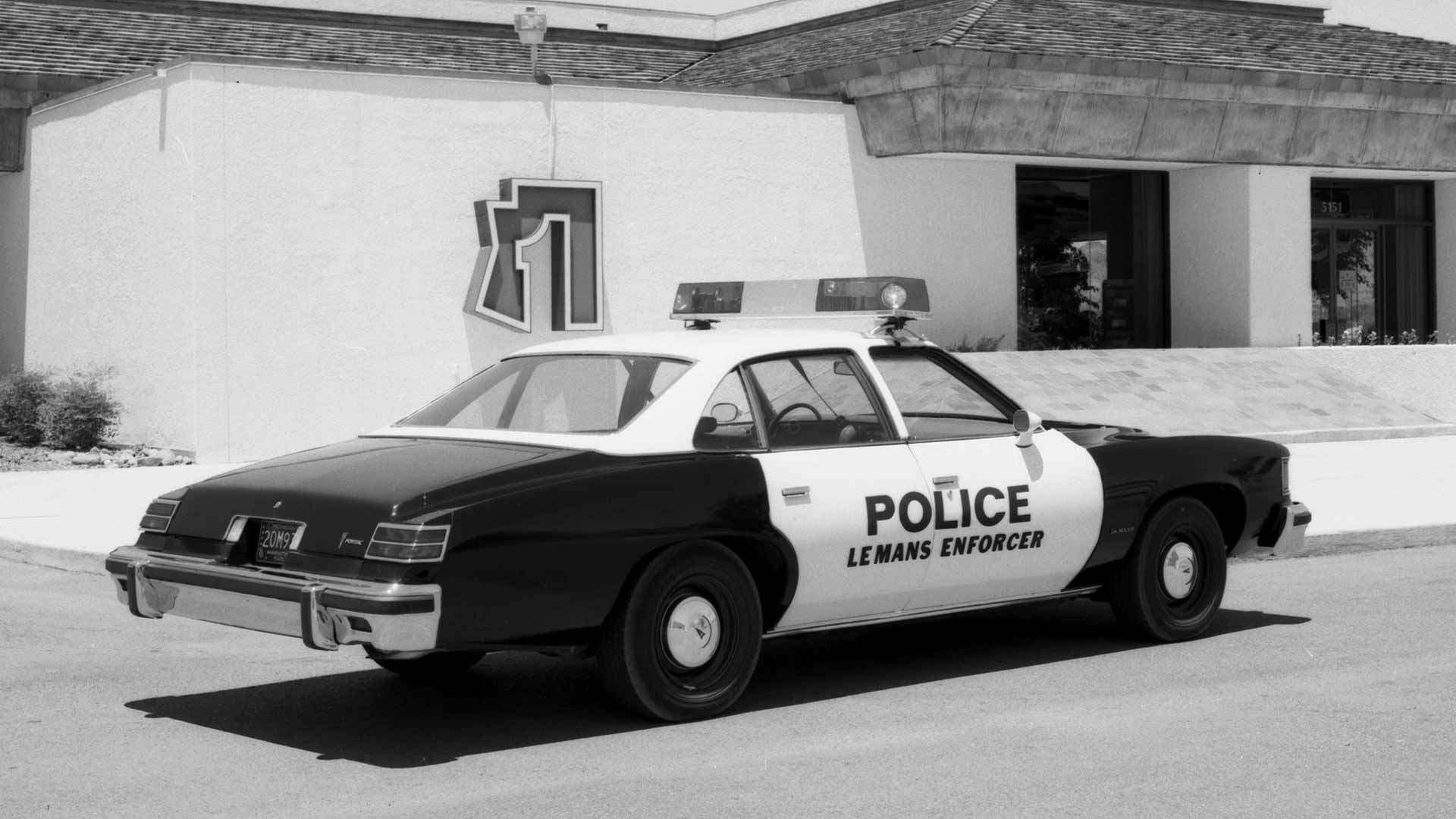
1977 Pontiac LeMans Enforcer
© GM Media ArchivesThe 1977 Pontiac LeMans Enforcer found fame in the movie Smokey and the Bandit. While its dowdy appearance made it look like no match for Bandit’s black Pontiac Trans Am, Sheriff Buford T Justice had the same engine under the hood: 400 cubic inches of Malaise Era V8 good for a wheezy 200 horsepower in top trim.
The LeMans might have been a match in the handling department, as well. It featured a heavy-duty frame, high-rate springs, front and rear stabilizer bars, four-link rear suspension, and double-acting shock absorbers.
-
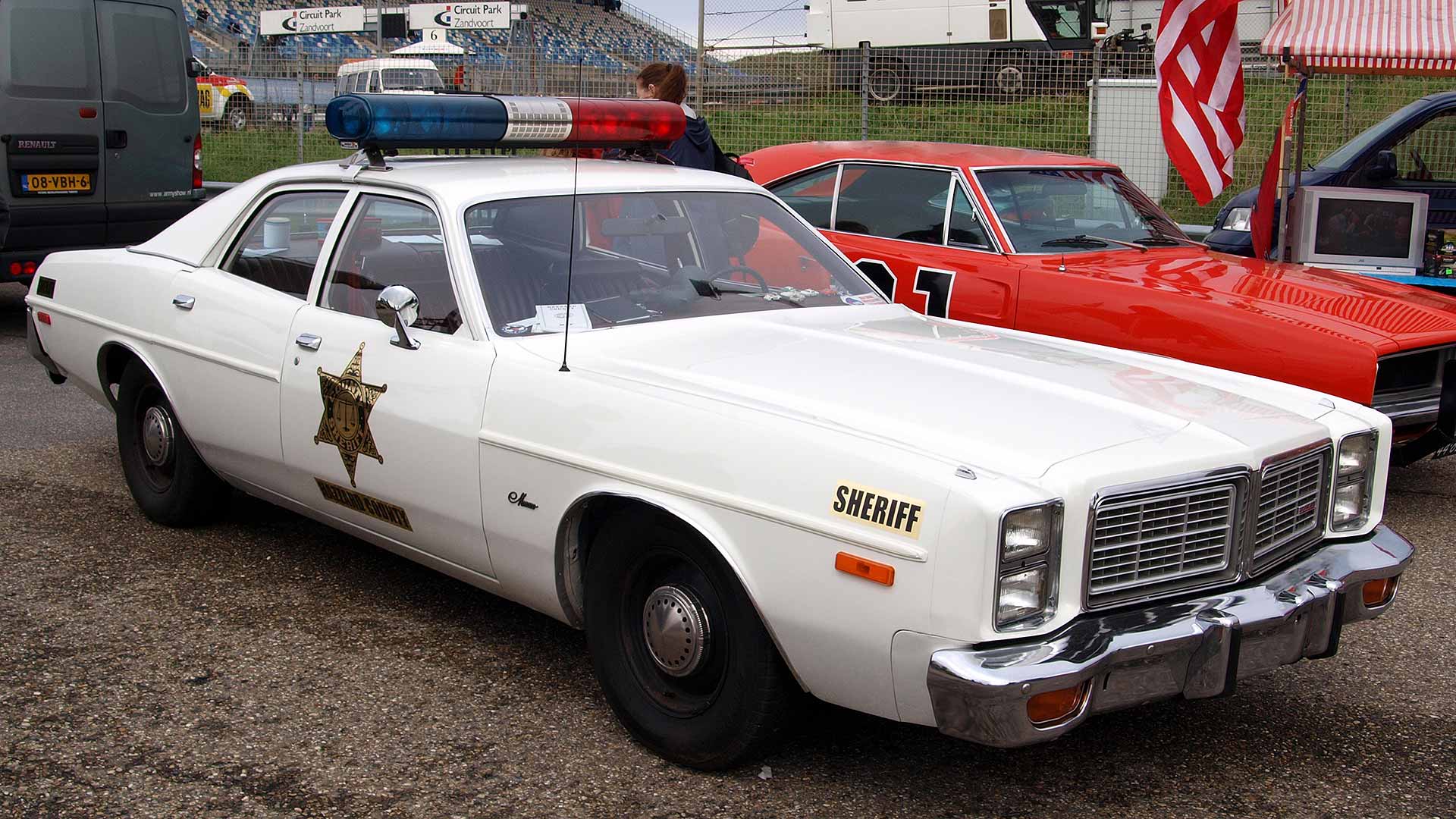
1977 Dodge Monaco
© Public domainThe Dodge Monaco is the most storied of all cop cars. The California Highway Patrol and the Washington State Patrol both used 1977 models as pursuit vehicles with 440 cubic-inch V8s under the hood. With 230 horsepower and 330 lb-ft of torque on tap, the Monaco 440 was the most powerful car of the year.
More importantly, of course, is the starring role the Monaco had in the both the Dukes of Hazzard TV show (shown) and The Blues Brothers movie (a 1974 model), the film that single-handedly made police cars cool with this one quote from Elwood Blues: “It’s got a cop motor, a 440 cubic inch plant, it’s got cop tires, cop suspensions, cop shocks. It’s a model made before catalytic converters so it’ll run good on regular gas. What do you say, is it the new Bluesmobile or what?”
-
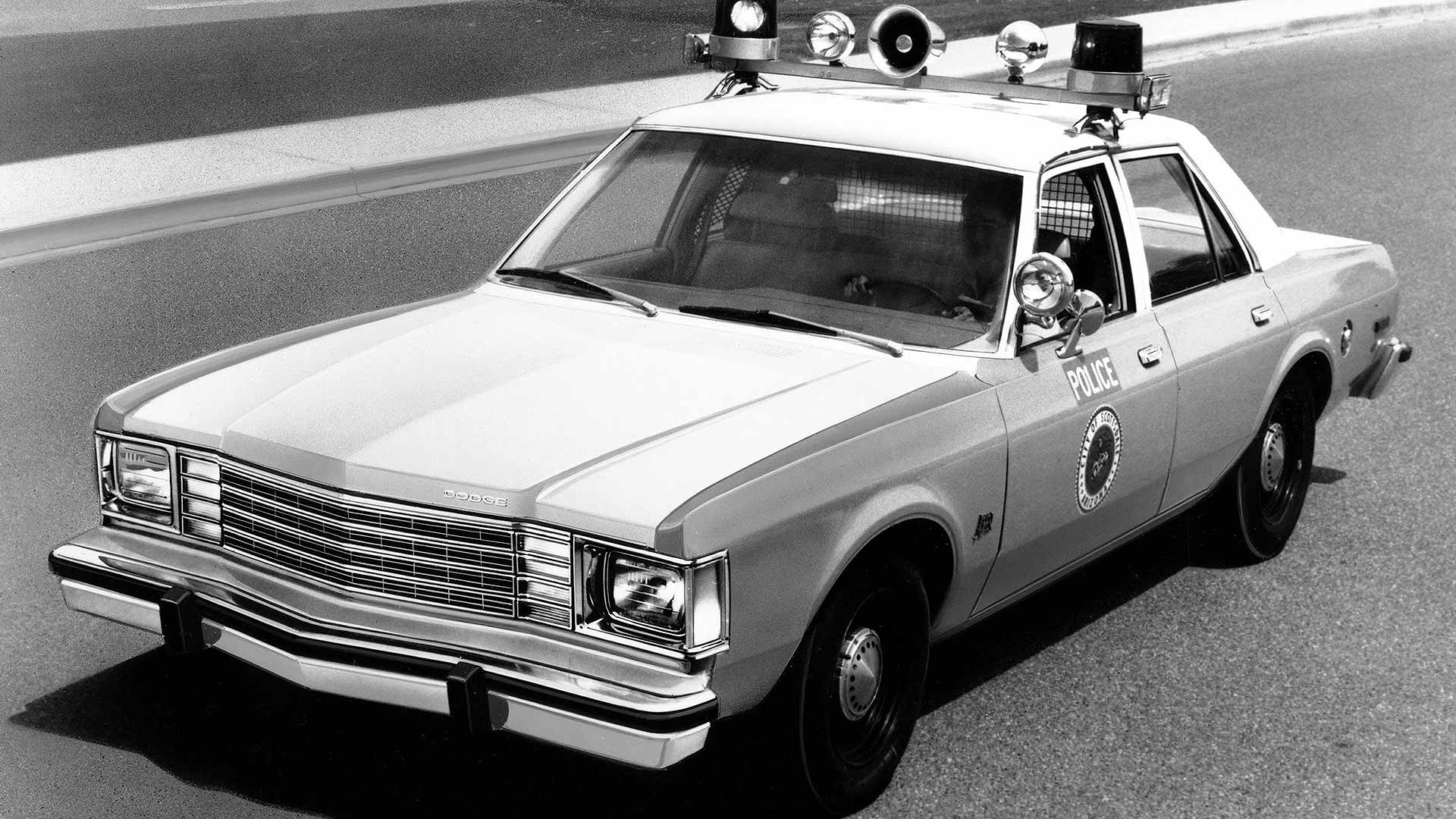
1980 Dodge Aspen Pursuit
© FCAAnother hot compact, the 1980 Aspen Pursuit had 5.9 liters under the hood when civilian models could only be ordered with 5.2 (360 cubic inches and 318, respectively). Though still deep in the Malaise Era, horsepower had crept back up to 185 from 160 the year before. Zero to 60 was in the nine-second range and the quarter mile rushed lazily by in 17 seconds, encouraged to sloth by a transmission with only three speeds. Luckily, little else on the road could do much better at the time.
Though 1980 was the last year for the Aspen, Chrysler chief Lee Iacocca insisted it be given a more modern look. The round headlights of ‘79 were replaced with square units, and the Aspen shared front fenders, bumper, and hood with the Dodge Diplomat.
-
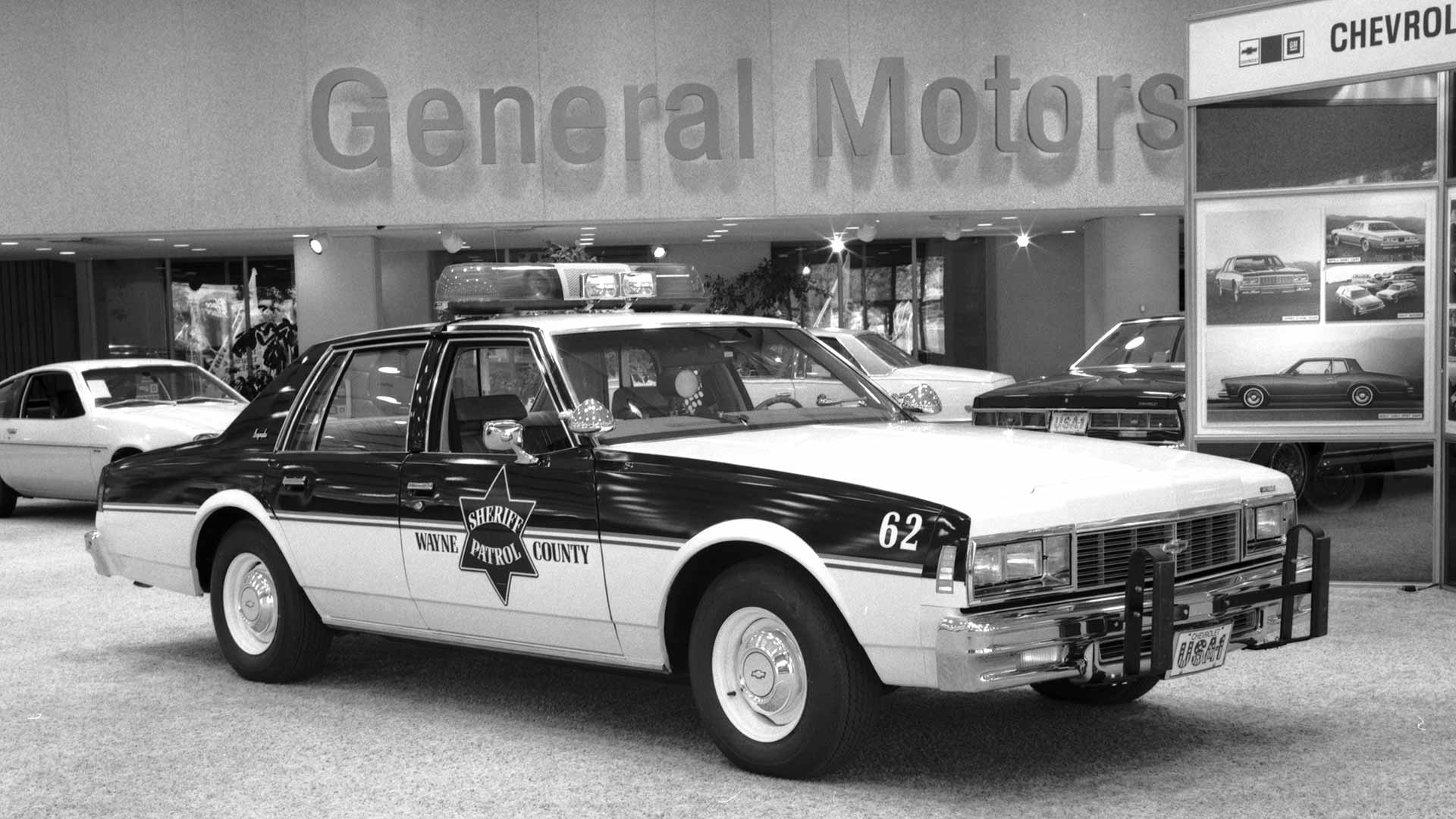
1980 Chevrolet Impala
© GM Media ArchivesThe sixth-generation Chevy Impala was the quintessential American cop car from 1977 through most of the 1980s. The short body and tall cabin proved ideal for police work, providing both maneuverability in tight places and ample room for officers, gear, and even a few ne’er-do-wells in the back seat. A 4.1-liter V6 was offered, but most were ordered with Chevy’s famous and incredibly robust 350 cubic-inch V8.
The storied 9C1 police package added heavy-duty everything to the vehicle: frame, shocks, springs, cooling, alternator, seats, wheels, and myriad other odds and ends. Combined with the 350, the police Impala was virtually indestructible.
The Impala was replaced by the Caprice in 1986, and the two models saw years of additional life after police duty as taxi cabs.